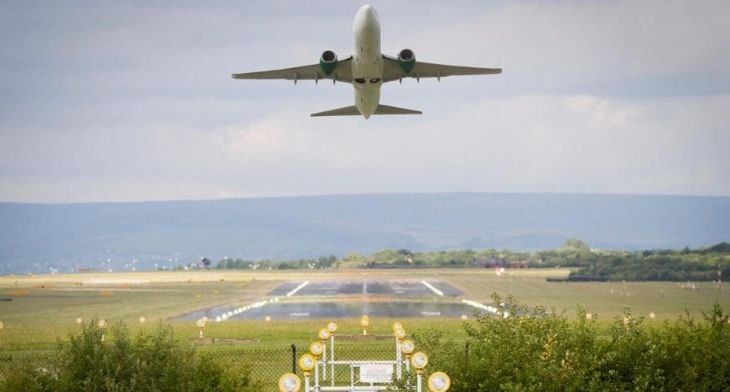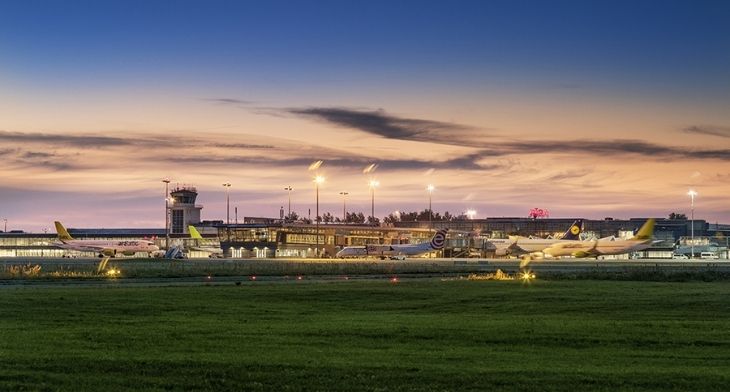


Airports Council International (ACI) World has berated the International Air Transport Association (IATA) for its “outrageous” statements that a rise in airport charges risk harming international connectivity and damaging aviation’s recovery.
IATA has painted a “distorted and flawed picture of the airport industry,” according to ACI World, which has called out the air transport association for claiming that increases in charges at airports place the burden of the recovery exclusively onto airlines. The claim was made that this would stall recovery in air travel and damage international air connectivity.
In a statement ACI World asserted that this “damaging assertion ignores the dire situation of Europe’s airports.” The association also pointed out that while airports in Europe have not only seen revenues collapsing by -60% in 2020 and by -65% in the first half of 2021, they have also been unable to reduce the predominantly fixed nature of their costs
“Airports have experienced enormous financial stress and had to make drastic cuts to keep afloat,” Luis Felipe de Oliveira, ACI World’s Director General enthused. “In many jurisdictions, airports did not receive the same level of support compared to air carriers. To keep facilities running and safe to operate cargo and humanitarian flights during the pandemic, for example, airports incurred large costs. Fundamentally, airports will always remain infrastructure-intensive businesses – this translates into a high ratio of fixed costs,” he continued.
As a result, airports have had no recourse but to take on massive debt at market conditions. Europe’s airports gross financial debt has so far increased by +200% compared to 2019.
Bleak financial prospects
And while air traffic has started to pick up, financial prospects remain bleak with most of Europe’s airports facing a cost intensive and revenue weak recovery. This is in part due to the need to scale up facilities and services to accommodate peaks in traffic while overall volumes still fail to generate the revenues required to cover costs. The airport slot usage waivers granted to airlines resulting in unused capacity are also contributing to the revenue weak recovery.
As a result of all these factors, Europe’s airports are now facing an investment crunch and many simply will not be able to financially recovery without increasing charges – unless governments step in and compensate airports for not doing so.
A recent survey of airport operators spanning all regions of the world and different sizes in terms of traffic levels showed that the majority of airports (nearly 70%) had implemented some form of discount or incentives in their airport charging schemes to address the impacts of COVID-19 and support a recovery. Also, during 2020 many airport operators deferred or waived certain airport charges in support of their airline clients.
In addition, IATA’s own data shows that during the crisis there was a decrease in user charges as a share of airline costs. An analysis of charges, which contain both air traffic control and airport charges, shows that these charges are only approximately 5% of airline cost items in 2020, and this share decreased from pre-COVID 2019 levels.
By requesting systematic freezes or reductions in airport charges, IATA is forcing airports into further financial distress to the exclusive benefit of airlines, according to ACI World. Frozen or lower airport charges would not prevent airlines form exercising their pricing power over consumers and raise air fares.
Shared responsibility
Olivier Jankovec, Director General of ACI Europe, has also waded into the debate to say: “We should ultimately remember that airlines can afford to pay airport charges. Airlines only pay airports if they operate, and only weeks after they have collected revenue from passengers. Airlines are ill-placed to give us a lesson in preserving the interests of customers, when they refused for months to refund passengers for flights that could not take place, with some still dragging their feet to do so.”
He added that the “long-term recovery of the air transport eco-system will be secured through stabilising and further stimulating demand. These objectives are core to airports’ pricing structures with over 95% of Europe’s airports routinely offering rebates and incentives to airlines.”
Oliveira added that “this may be a moment to rethink the economic oversight of airport charges to something that is more reflective of market conditions allowing for risk to be shared across airlines and airports. Airports will remain infrastructure-intensive businesses, which means inevitable high fixed costs which must be maintained for the benefit of passengers and the communities that airports serve. We will continue to collaborate with our airline partners and other stakeholders to rebuild a sector that is resilient and sustainable – but it needs to be fair for the entire aviation ecosystem.”
Call for greater unity
Meanwhile, the Civil Air Navigation Services Organisation (CANSO) also called for greater unity to tackle the industry-wide financial crisis with Simon Hocquard, CANSO’s Director General saying: “Headline statements from IATA’s annual general meeting could lead to the impression that only airlines should be allowed to recover costs. Yet organisations across the entire aviation spectrum faced a significant drop in revenues these past 20 months and have incurred substantial debt as a result of plummeting air traffic levels. The statements also undermine the considerable steps air navigation service providers (ANSPs) across the globe have taken to address their revenue shortfalls.”
ANSPs have implemented a myriad of cost-cutting measures – reducing staff numbers, cutting pay and postponing long-term investment projects. And they have done so while continuing to fulfil their role as a critical national infrastructure – keeping the skies open and safe no matter what the traffic levels.
Hocquard also explained that while airline non fuel unit costs rose 19% in 2020 compared to 2019, as fixed costs had to be spread over a dramatically smaller capacity base, Air Navigation Service charges are subject to the same phenomena. With reduced traffic, the costs of running the system at some point have to be spread over the lower traffic volume, driving costs up.
“The ATM industry has a solid record in improving productivity and cost effectiveness and on transparency with regards to its performance,” said Hocquard. “The past 20 months has turned that inside out but has not altered the fundamentals.”
He concluded by warning: “A difficult road lies ahead as we wrestle together, and individually, with that fact. This crisis has taught us many lessons, but we must be careful that the lessons we have learned from the current crisis do not undermine the lessons we have always known to be true. That cutting investment in response to a short-term crisis, has a long-term impact on capacity. Now more than ever, it is important for the entire aviation industry to come together and discuss how to tackle the financial challenges we all face and not resort to blaming each other.”






